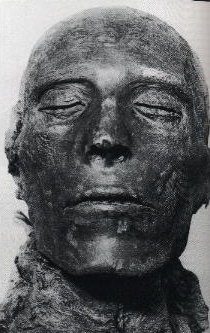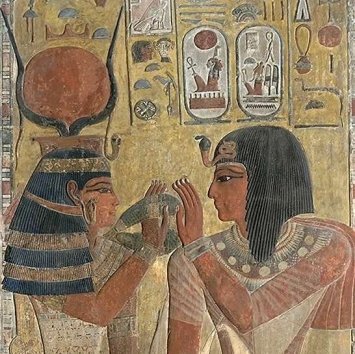This is Ramses II's father, Sety I.
Sety I's tomb is located in The Valley of The Kings,where the kingdom's Pharaohs and Nobles were buried. Sety I's tomb is particularly intriguing because it's debated to be the most well preserved in all of the Valley. The tomb is filled with high grade relief sculptures and paintings. Perhaps the tomb is so well preserved because it delves into the depths of the Earth. You can view the tombs structure below. I've never understood the excessive burial customs of past cultures. Did he really have to go that deep into the ground? I don't even like basements. I think anybody who wants to be that deep in the ground probably never liked people for the most part. He's making his burial spot such an inconvenience to visit. Perhaps he said something along these lines, "I don't like seeing you people in my current life! Why in the hell would I want to see you in my afterlife???"
This map will give you a general idea of KV17's layout.
"KV17 is an odd name for a burial site," you say? Yes, at first it sounds like the name of a hip night club you'd find in a big city. But it's actually a series of burial sites named similarly. KV is representative of 'The Valley of Kings' and the number following is an identification to which individual. KV17 is known by many names, including "The Tomb of Apis." KV17's architecture constitutes seven corridors & ten chambers. Through studies, experts concluded that a majority of the tomb was built prior to Sety I's mummification. But a large part of the tomb's decoration was done post-mortem, by his son, Ramses II. You must take this information into account when viewing this tomb. You are not seeing Sety I through his own vision and guidance. You are seeing Sety I painted and sculpted the way his son saw fit. A level of respect is shown to his father, by how complete the tomb was decorated. I treat this as a lesson. Treat your children right and teach them good and you'll live forever. They say you have two deaths. The first is when your body dies. The second death is the last ttime someone speaks about you. If you live right and treat your children right, your second life is bound to be lengthy.
Above is an example of the relief sculpture found in KV17. It's hard to have aesthetic favoritism when viewing Egyptian human figures because they all look the same! It's as though they got this same one guy to do every Pharaoh's portrait! Because of this I tend to focus on adornments, whether clothing or jewelry. In this particular example, Sety I is wearing a crown of some sort that features a snake. Sety I also seems to be wearing a shawl or silk drape. From this depiction Sety I looks stylish and bad ass. I wish I could wear a snake on my head! Sety I looks like a rockstar getting love from a groupie. To use common terms, this photo would be posted Sety I's facebook wall with a caption, "The afterlife is going to rock, High-Five!" or "Long Hair, Don't Care. Vote Sety I 1276 BC" From what I can tell Sety I was a good father and hip ruler.



